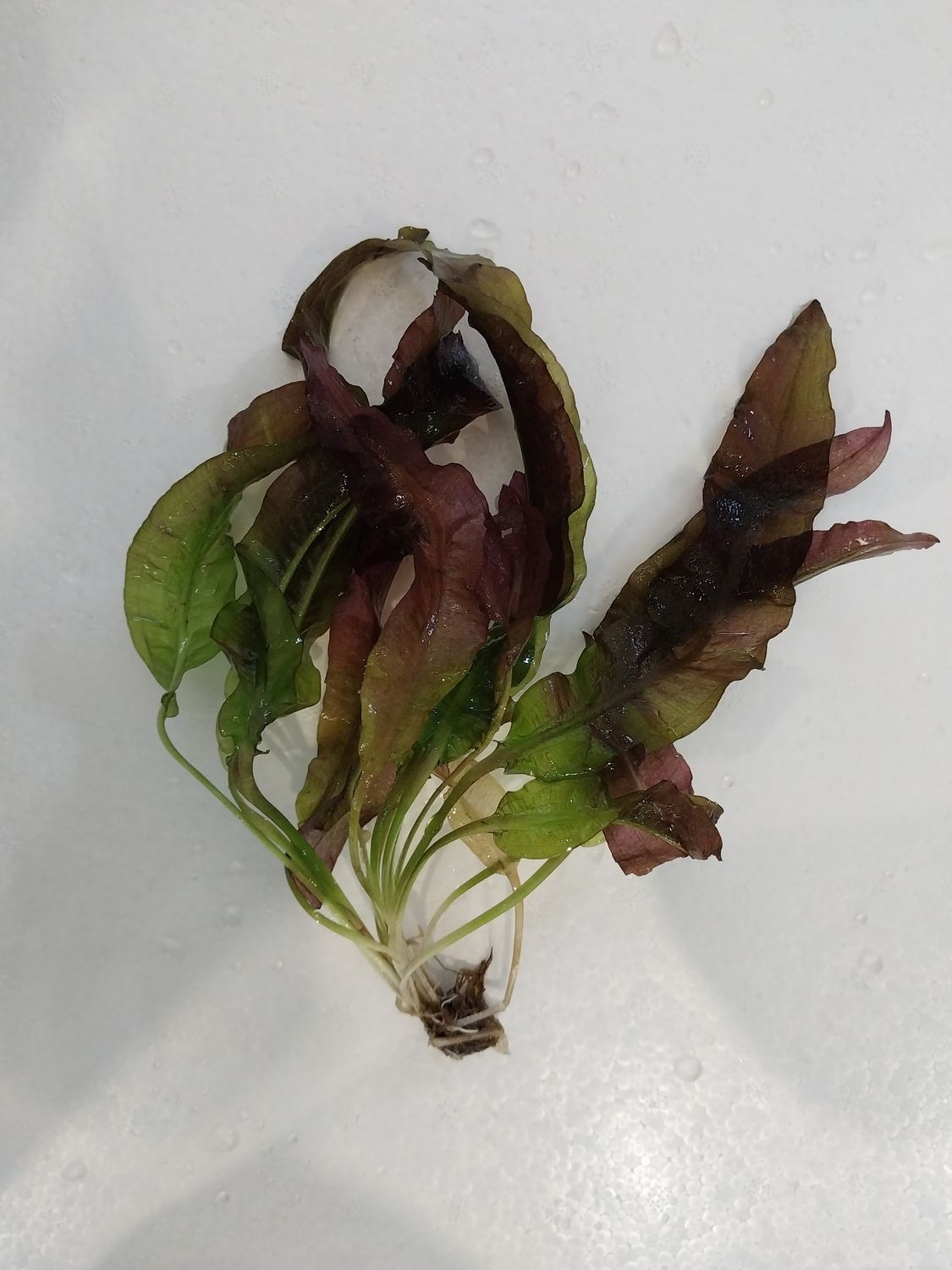Aponogeton sp. 'Purple Red'
Aponogeton sp. 'Purple Red' is a stunning bulb plant appreciated for its long, wavy, and slightly translucent reddish-purple leaves that bring bold color and movement to aquascapes.
Here’s a complete care guide:
Aponogeton sp. 'Purple Red' – Care Guide
Quick Facts
-
Type: Bulb plant (true aquatic)
-
Growth Rate: Moderate to fast
-
Leaf Color: Reddish-purple to deep red
-
Size: 20–40+ cm (8–16 inches) tall
-
Placement: Background or centerpiece
-
Origin: Cultivar (possibly derived from A. crispus or similar)
Water Parameters
-
Temperature: 20–28°C (68–82°F)
-
pH: 6.0–7.5
-
Water Hardness: Soft to moderately hard
-
CO₂: Not required, but helps support more vivid coloration and stronger growth
Lighting
-
Level: Medium to high
-
Why it matters: Red/purple hues are enhanced under good lighting
-
Tip: Avoid intense direct light unless CO₂ is also used, to reduce algae risk
Planting Instructions
-
Do not bury the entire bulb—leave the top 1/3 exposed
-
Substrate: Nutrient-rich preferred (e.g., aquasoil or fine gravel with root tabs)
-
Spacing: Give room for its broad, arching leaves to fan out
Fertilization
-
Substrate feeding: Important—use root tabs if using inert substrate
-
Water column fertilization: Supplement with macronutrients (NPK) + micronutrients
-
Iron: Helps maintain red/purple pigmentation
-
CO₂: Optional, but supports faster, more vibrant growth
⏳ Dormancy Phase
-
Note: Like many Aponogeton species, it may enter dormancy:
-
Stops producing leaves for several weeks
-
Bulb remains in substrate
-
-
What to do:
-
Reduce lighting slightly
-
Do not remove the bulb
-
New growth usually resumes on its own
-
✂️ Maintenance & Propagation
-
Pruning: Trim dead or decaying leaves at the base
-
Propagation: Not easily propagated by hobbyists; typically grown from bulbs
-
Spacing: Don’t overcrowd—it needs good water flow and space for leaves to expand
⚠️ Common Issues
| Problem | Cause | Solution |
|---|---|---|
| Melting leaves | Sudden water parameter changes | Acclimate plant slowly; prune melted leaves |
| No growth (dormancy) | Natural cycle or poor nutrients | Wait 4–8 weeks; ensure bulb is healthy |
| Pale or greenish leaves | Lack of iron or poor lighting | Use iron supplements, increase lighting |
Tank Compatibility
-
Safe for: Shrimp, snails, peaceful fish
-
Avoid with: Plant-destroying fish like goldfish or large cichlids
-
Great for: Nature-style and Dutch aquascapes where contrast and color are key
✅ Tips for Best Color
-
Use high-quality lighting with full spectrum (6,500–7,500K)
-
Keep up with iron dosing
-
Maintain stable parameters
-
Ensure good root nutrition

